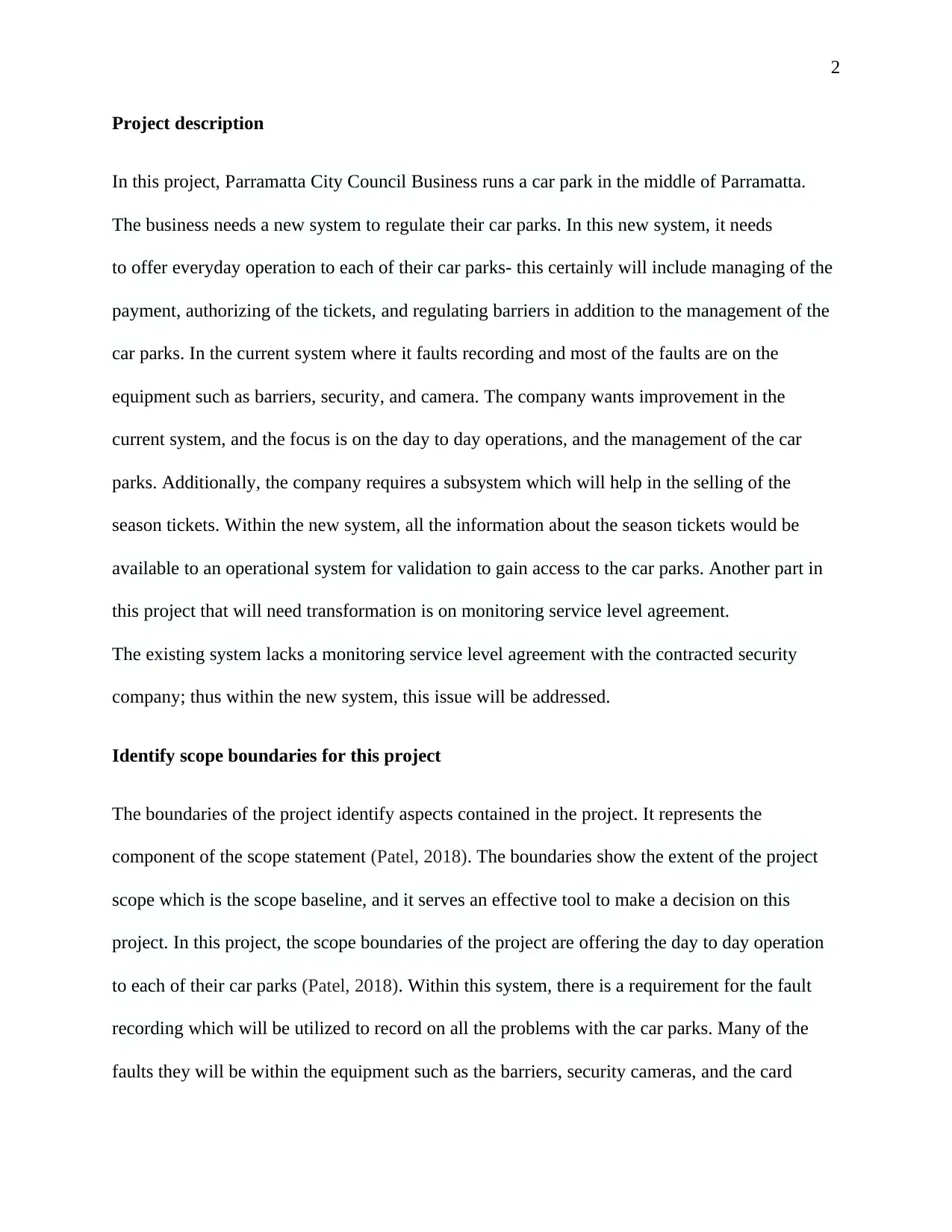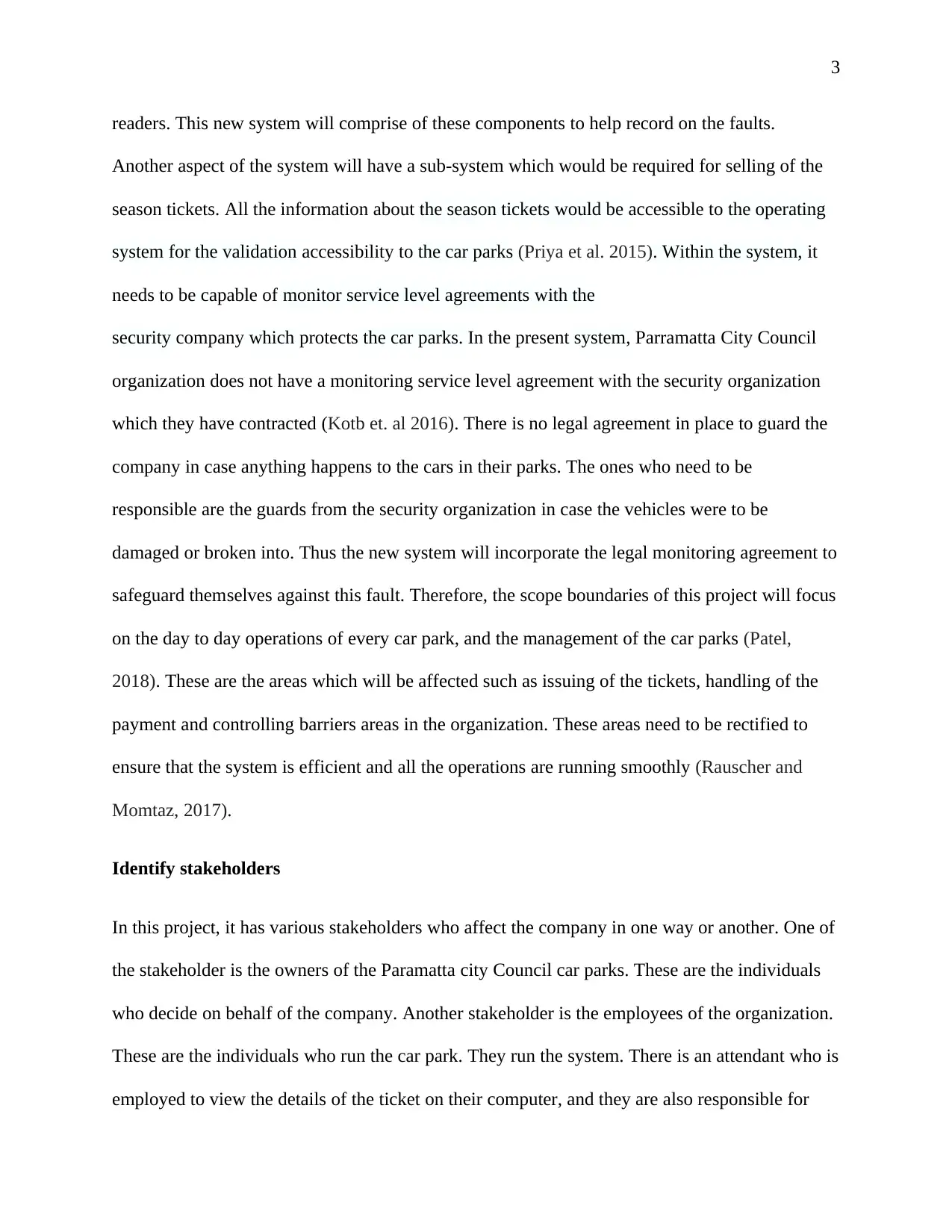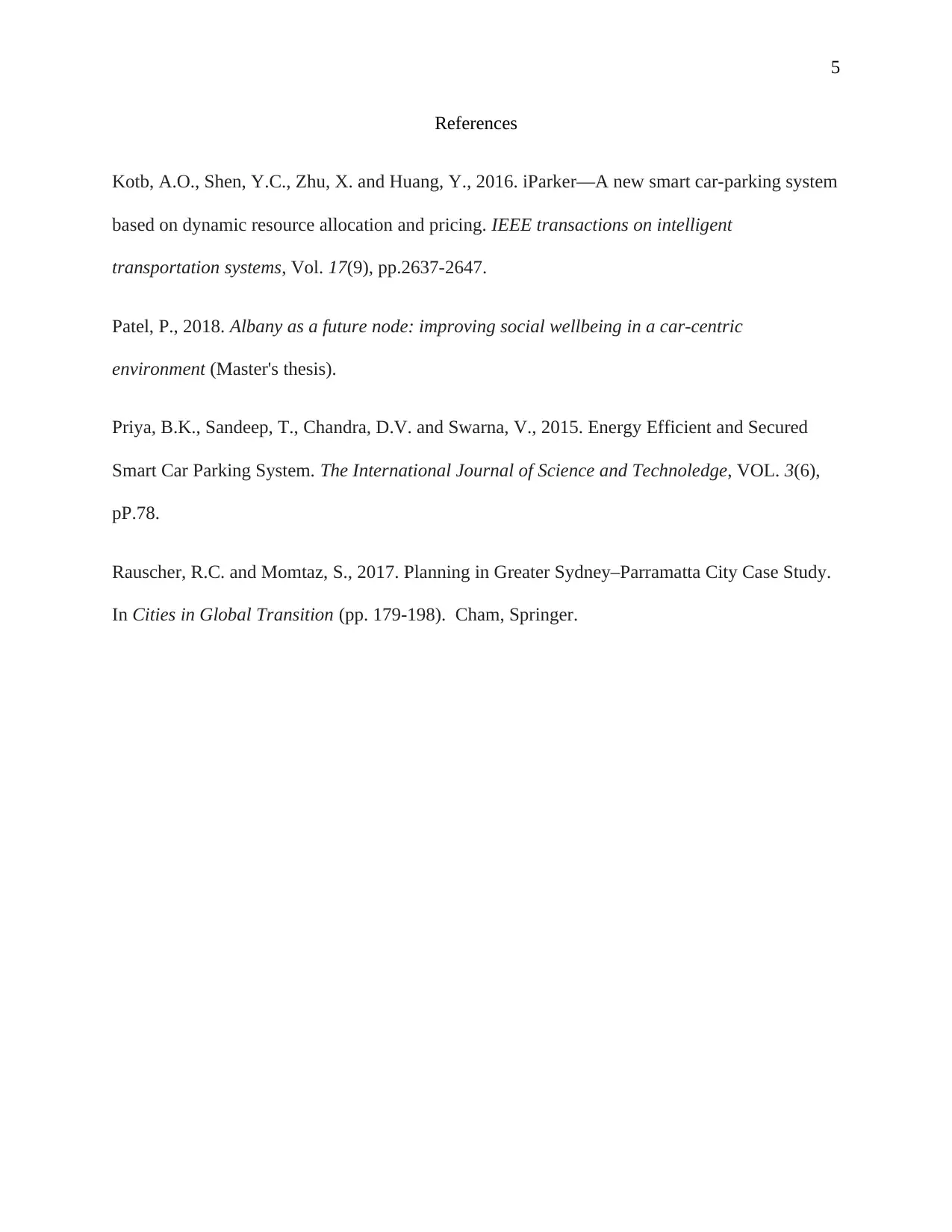Parramatta City Council Car Park System: A Business Development Case
VerifiedAdded on 2023/04/20
|5
|951
|347
Case Study
AI Summary
This case study examines the Parramatta City Council's car park system, focusing on the need for a new system to manage day-to-day operations, including issuing tickets, handling payments, and controlling barriers. The existing system faces challenges in fault recording, particularly with equipment like barriers and security cameras. The proposed system aims to improve operational efficiency and introduce a subsystem for selling season tickets, ensuring validation for car park access. Furthermore, the study highlights the importance of monitoring service level agreements with the contracted security company, addressing the current lack of a legal agreement to protect the company against potential damages or security breaches. The project's scope boundaries encompass the daily operations of each car park and the overall management, focusing on areas like ticket issuance, payment processing, and barrier control to ensure smooth and efficient operations. Key stakeholders include the Parramatta City Council owners, employees, customers, and security companies.
1 out of 5












![[object Object]](/_next/static/media/star-bottom.7253800d.svg)